-
×
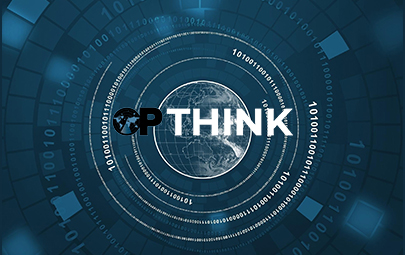 Opthink By Everyday Spy
1 × $69,00
Opthink By Everyday Spy
1 × $69,00 -
×
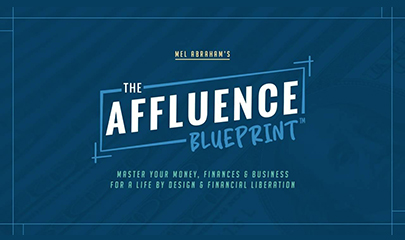 The Affluence Blueprint By Mel Abraham
1 × $31,00
The Affluence Blueprint By Mel Abraham
1 × $31,00 -
×
 How to Build a GPT 4 Chatbot By Dan Shipper
1 × $31,00
How to Build a GPT 4 Chatbot By Dan Shipper
1 × $31,00 -
×
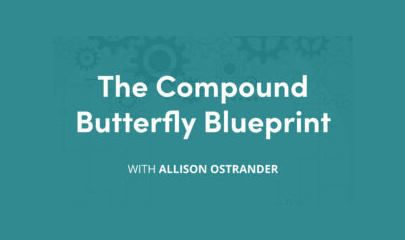 Compound Butterfly Blueprint (Elite Package) By Allison Ostrander - Simpler Trading
1 × $62,00
Compound Butterfly Blueprint (Elite Package) By Allison Ostrander - Simpler Trading
1 × $62,00 -
×
 Linux Administration Bootcamp By Stone River eLearning
1 × $6,00
Linux Administration Bootcamp By Stone River eLearning
1 × $6,00 -
×
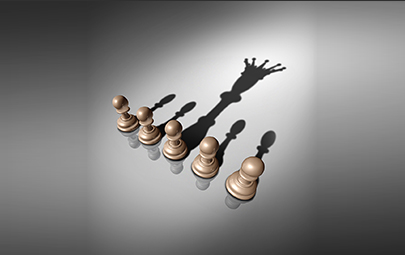 6 Steps to Great Leadership (Videos Only) By John Demartini
1 × $54,00
6 Steps to Great Leadership (Videos Only) By John Demartini
1 × $54,00 -
×
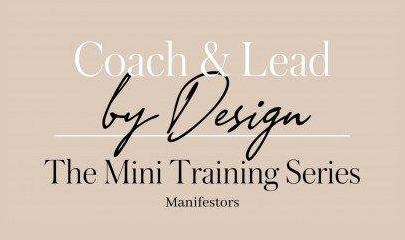 How to Lead and Coach By Design By Elisa Canali
1 × $23,00
How to Lead and Coach By Design By Elisa Canali
1 × $23,00 -
×
 Bank and Financial Institution Modeling Course (Bank – FIG Modeling) By Matan Feldman - Wall Street Prep
1 × $69,00
Bank and Financial Institution Modeling Course (Bank – FIG Modeling) By Matan Feldman - Wall Street Prep
1 × $69,00 -
×
 Brand Authority Profits By Dan Henry
1 × $39,00
Brand Authority Profits By Dan Henry
1 × $39,00 -
×
 Power BI Visual Data Analytics for Project Controls By Jeancarlo Duran Maica - Project Control Academy
1 × $272,00
Power BI Visual Data Analytics for Project Controls By Jeancarlo Duran Maica - Project Control Academy
1 × $272,00 -
×
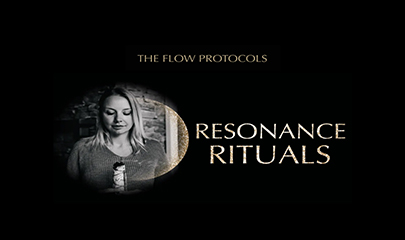 Resonance Rituals 2023 By Cat Howell
1 × $39,00
Resonance Rituals 2023 By Cat Howell
1 × $39,00 -
×
 Infield Academy By Vadim - Honest Signalz
1 × $23,00
Infield Academy By Vadim - Honest Signalz
1 × $23,00 -
×
 Scrapbooking Your Baby First Year By Nicole Samuels
1 × $5,00
Scrapbooking Your Baby First Year By Nicole Samuels
1 × $5,00 -
×
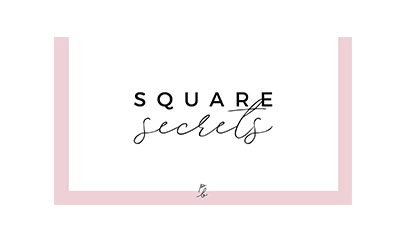 Square Secrets 7.1 By Paige Brunton
1 × $23,00
Square Secrets 7.1 By Paige Brunton
1 × $23,00 -
×
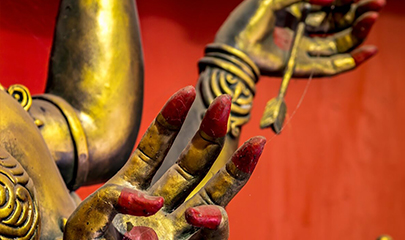 Durga Saptashati By Pandit Rajmani Tigunait
1 × $85,00
Durga Saptashati By Pandit Rajmani Tigunait
1 × $85,00 -
×
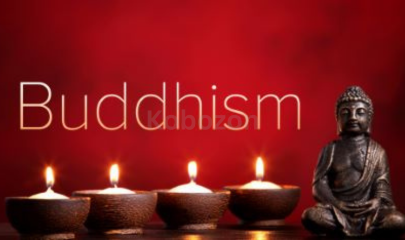 Buddhism By Malcolm David Eckel
1 × $5,00
Buddhism By Malcolm David Eckel
1 × $5,00 -
×
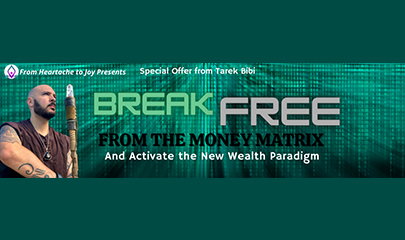 Break Free from the Money Matrix By FHTJ Programs - Tarek Bibi
1 × $46,00
Break Free from the Money Matrix By FHTJ Programs - Tarek Bibi
1 × $46,00 -
×
 eCom Fast Track Bundle By Justin Phillips
1 × $15,00
eCom Fast Track Bundle By Justin Phillips
1 × $15,00 -
×
 Limitless 2.0 (Week 1 – 5) by David Tian
1 × $5,00
Limitless 2.0 (Week 1 – 5) by David Tian
1 × $5,00 -
×
 Twitter Masterclass Recordings By Cold Email Wizard
1 × $39,00
Twitter Masterclass Recordings By Cold Email Wizard
1 × $39,00 -
×
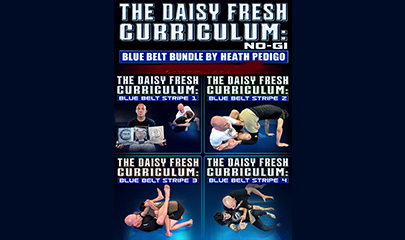 The Daisy Fresh Curriculum - Blue Belt - No Gi Bundle By Heath Pedigo
1 × $93,00
The Daisy Fresh Curriculum - Blue Belt - No Gi Bundle By Heath Pedigo
1 × $93,00 -
×
 X-Guard by Rafael Costa
1 × $6,00
X-Guard by Rafael Costa
1 × $6,00 -
×
 DeluxeBundle Collection Seduction Materials by Brad P
1 × $5,00
DeluxeBundle Collection Seduction Materials by Brad P
1 × $5,00 -
×
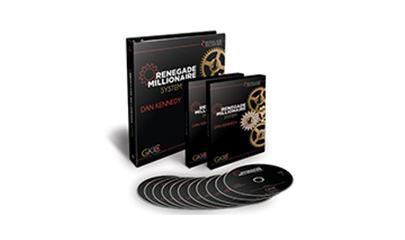 Renegade Millionaire System By Dan Kennedy
1 × $6,00
Renegade Millionaire System By Dan Kennedy
1 × $6,00 -
×
 The Virtual Workshop By John Wineland
1 × $39,00
The Virtual Workshop By John Wineland
1 × $39,00 -
×
 Effortless Millionaire 3 Day Event By Elisa Canali
1 × $46,00
Effortless Millionaire 3 Day Event By Elisa Canali
1 × $46,00 -
×
 Evidence-Based Treatment Planning for Obsessive Compulsive Disorder with Timothy Bruce & Arthur Jongsma
1 × $8,00
Evidence-Based Treatment Planning for Obsessive Compulsive Disorder with Timothy Bruce & Arthur Jongsma
1 × $8,00 -
×
 Acceptance and Commitment Therapy (ACT): 3-Day Master Class By Jennifer Patterson
1 × $69,00
Acceptance and Commitment Therapy (ACT): 3-Day Master Class By Jennifer Patterson
1 × $69,00 -
×
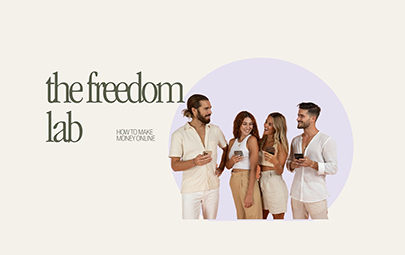 The Freedom Lab By Club Life Design
1 × $93,00
The Freedom Lab By Club Life Design
1 × $93,00 -
×
 Essential Teachings and Practices of Spiritual Science By Vesica
1 × $62,00
Essential Teachings and Practices of Spiritual Science By Vesica
1 × $62,00 -
×
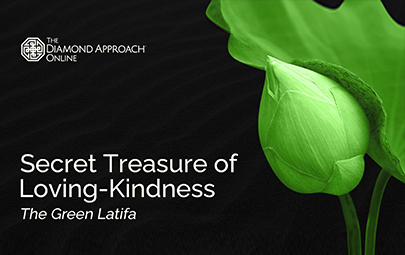 LOB Secret Treasure of Loving-Kindness: The Green Latifa - LB-GRE-EV By Diamond Approach
1 × $23,00
LOB Secret Treasure of Loving-Kindness: The Green Latifa - LB-GRE-EV By Diamond Approach
1 × $23,00 -
×
 Natural Instinct Method - RSD Nation
1 × $5,00
Natural Instinct Method - RSD Nation
1 × $5,00 -
×
 Training Session - Back Escapes by Renzo Gracie
1 × $6,00
Training Session - Back Escapes by Renzo Gracie
1 × $6,00 -
×
 This Day in History: August By Wondrium
1 × $5,00
This Day in History: August By Wondrium
1 × $5,00 -
×
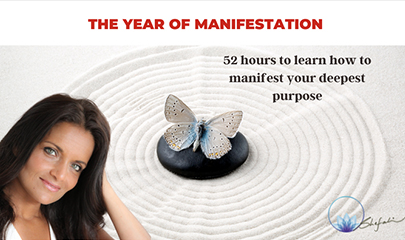 The Year of Manifestation By Shefali Tsabary
1 × $233,00
The Year of Manifestation By Shefali Tsabary
1 × $233,00 -
×
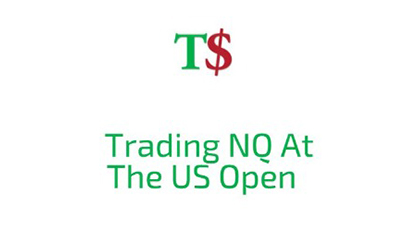 Trading NQ At The US Open By TradeSmart
1 × $10,00
Trading NQ At The US Open By TradeSmart
1 × $10,00 -
×
 The Federal Code Government Contracting By Jason White
1 × $23,00
The Federal Code Government Contracting By Jason White
1 × $23,00 -
×
 Buying A Profitable Revenue Stream And Call By Bruce Whipple
1 × $31,00
Buying A Profitable Revenue Stream And Call By Bruce Whipple
1 × $31,00 -
×
 The Manifestation Collective Certification (SEMESTER 1) By Kimberley Wenya
1 × $311,00
The Manifestation Collective Certification (SEMESTER 1) By Kimberley Wenya
1 × $311,00 -
×
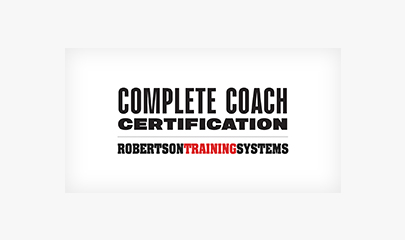 Complete Coach Certification By Mike Robertson
1 × $109,00
Complete Coach Certification By Mike Robertson
1 × $109,00 -
×
 How You Decide: The Science of Human Decision Making By Ryan Hamilton
1 × $5,00
How You Decide: The Science of Human Decision Making By Ryan Hamilton
1 × $5,00 -
×
 Free Your Mind By Roy Martina
1 × $78,00
Free Your Mind By Roy Martina
1 × $78,00 -
×
 Training the Electric/Magnetic Lines of Force with Movement By Sixty Skills
1 × $15,00
Training the Electric/Magnetic Lines of Force with Movement By Sixty Skills
1 × $15,00 -
×
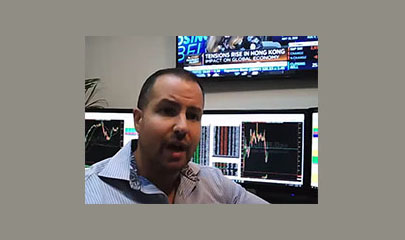 Options Trading with Nick And Gareth By Nick Santiago And Gareth Soloway - InTheMoneyStocks
1 × $31,00
Options Trading with Nick And Gareth By Nick Santiago And Gareth Soloway - InTheMoneyStocks
1 × $31,00 -
×
 Mount: control and submissions by Paulo Guillobel
1 × $6,00
Mount: control and submissions by Paulo Guillobel
1 × $6,00 -
×
 Gada - Mace SIX By Harbert - Dutch Flow Academy
1 × $54,00
Gada - Mace SIX By Harbert - Dutch Flow Academy
1 × $54,00 -
×
 Hedged Strategy Series in Volatile Markets All 4 By Dan Sheridan
1 × $15,00
Hedged Strategy Series in Volatile Markets All 4 By Dan Sheridan
1 × $15,00
The Philosophical Influences on Early Acupuncture and their Significant Applications
$193,00 $46,00
SKU: KOB.594995PrR2z
Category: Health
Tags: Acupuncture, The Philosophical Influences on Early, their Significant Applications
Philosophical Influences On Early Acupuncture – Digital Download!
Let’s embark on a captivating adventure to uncover remarkable insights that spark your curiosity and elevate your understanding

The Philosophical Influences on Early Acupuncture and their Significant Applications
Overview
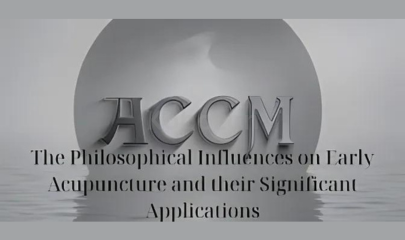
Philosophical Influences On Early Acupuncture
Acupuncture, an ancient healing practice originating from China, not only embodies a system of treatment but also weaves together a rich tapestry of philosophical influences. These philosophical roots offer a deeper understanding of acupuncture’s principles and practices, establishing its significance in traditional Chinese medicine (TCM) and its evolving role in contemporary healthcare. Acupuncture’s essence lies in the harmonious balance of qi (vital energy), and the intricate relationship between the physical body and the surrounding universe. Much like a tree flourishing in sync with nature, acupuncture thrives within its philosophical frameworks, drawing from schools of thought such as Daoism, Confucianism, and naturalism.
In this exploration of philosophical influences on early acupuncture, we will delve into its origins, historical texts that serve as foundations, and the key philosophical schools that shaped its development. From examining the guiding concepts of qi and meridians to the pivotal role of texts like the Huangdi Neijing, we will unravel how these philosophical underpinnings have breathed life into an ancient practice that continues to find relevance in modern medicine. Ultimately, understanding these philosophical influences not only sheds light on acupuncture’s past but also illustrates its ongoing significance in promoting health, well-being, and a sense of balance in an ever-evolving world.
Origins of Acupuncture Philosophy
The origins of acupuncture philosophy are deeply intertwined with ancient Chinese beliefs about the human body, nature, and the cosmos. This intricate relationship manifests through concepts such as qi, which is often considered the flow of life energy that sustains all living beings. In the early development of acupuncture, the philosophy emphasized a holistic approach, where health is viewed not just as the absence of disease but as a state of harmonious balance between the individual and their environment. Early practitioners believed that this balance could be disrupted by various factors, leading to illness. Within this framework, acupuncture emerged as a technique to restore the flow of qi by targeting specific points in the body known as meridians.
Additionally, the philosophy of yin and yang, representing dual yet complementary forces, plays a vital role in understanding the principles of acupuncture. This ancient idea suggests that health is defined by the equilibrium between yin (the passive, receptive force) and yang (the active, dynamic force). When either of these elements becomes imbalanced whether due to external stressors or internal disharmonies individuals may experience health issues. Acupuncture seeks to diagnose and rectify these imbalances, promoting overall wellness.
Historical texts such as the Huangdi Neijing and the Nan Jing offer profound insights into acupuncture’s foundational philosophies. The Huangdi Neijing, often referred to as the Yellow Emperor’s Classic of Internal Medicine, compiles various theories related to acupuncture, including the importance of each acupuncture point and its relationship to the organs and their functions. This text serves not only as a medical guide but also as an embodiment of the philosophical principles that guide acupuncture practice, illustrating the interconnectedness of body, circumstance, and the universe.
In contrast, the Nan Jing focuses more on practical applications and advanced diagnostic strategies, complementing the philosophical ideas presented in the Huangdi Neijing. It introduces methods such as pulse diagnosis, which aligns with the philosophy that recognizes the relationship between emotional states and physical health. This synergy between acupuncture philosophy and practice continues to influence how modern practitioners approach patient care, embracing both the art and science of healing.
Historical Texts and Philosophical Foundations
As a cornerstone of Traditional Chinese Medicine, the philosophical foundations of acupuncture reflect an accumulation of wisdom and understanding of the human body’s intricacies. The historical texts that encapsulate these philosophies provide guidance for both diagnosis and treatment within acupuncture practice. The Huangdi Neijing, for example, details the concepts of qi, the meridian system, and the principles of yin and yang. It serves as a comprehensive resource that encourages practitioners to consider a patient’s overall condition, rather than a mere collection of symptoms. In this way, the acupuncture philosophy underscores the importance of viewing health holistically, promoting harmony between the body and the environment.
The texts, often imbued with philosophies from Daoism and Confucianism, emphasize the balance between internal factors (such as emotional and psychological states) and external factors (including environmental elements). This perspective aligns with the notion that emotional distress can physically manifest, indicating the need for a healing approach that influences both the mental and bodily aspects of a patient. Practitioners are therefore encouraged to integrate emotional, physical, and environmental considerations when diagnosing and treating their patients.
Thus, the philosophical foundations presented in historical texts foster a unique understanding of health that permeates the practice of acupuncture. This knowledge provides practitioners with a comprehensive framework for developing treatment strategies that are not only effective but also sensitive to individual needs. In summary, the historical texts serve as a bridge between theory and practice, teaching acupuncturists to treat the whole person, not simply isolated symptoms.
The Role of Huangdi Neijing
The Huangdi Neijing occupies a preeminent position in the literature of Traditional Chinese Medicine, heralded as the original classic that lays the groundwork for acupuncture techniques and philosophy. Believed to have been compiled during the early Han dynasty (206 BCE – 220 CE), this text represents a dialogue between the legendary Yellow Emperor and his ancient advisers about health, medicine, and the nature of human existence. The text serves as a philosophical lens through which we can understand acupuncture’s relevance in both historical and contemporary contexts.
The Huangdi Neijing is structured into two principal sections: the Suwen (Basic Questions) and the Lingshu (Miraculous Pivot). The Suwen delves into the theoretical aspects of traditional Chinese medicine, elucidating concepts such as the nature of qi, the yin-yang relationship, and the five elements that inform diagnosis and treatment. It offers insights into how disruptions in these systems lead to illness and lays out guidelines for healthy living that balance yin and yang in daily life.
In contrast, the Lingshu focuses more meticulously on the practical application of acupuncture. It describes specific acupuncture points, their anatomical features, and their therapeutic significance. The Lingshu outlines techniques for needle insertion, the selection of points based on diagnostic findings, and the relationships between different points and bodily functions. In this sense, the text also embodies an inherent philosophical alignment; as practitioners are taught not just how to perform acupuncture, but why certain points are selected based on the underlying theory of energy flow.
The significance of the Huangdi Neijing extends beyond acupuncture practice alone; it has birthed a holistic paradigm of health that integrates emotional, spiritual, and physical well-being. Through the understanding imparted by this text, practitioners are encouraged to cultivate a more profound connection with their patients, recognizing the intricate interplay of mind, body, and environment within the scope of health.
Today, the Huangdi Neijing continues to shape the principles and strategies employed by acupuncturists worldwide, bridging ancient wisdom with modern healthcare needs. As a figure of influence, its philosophies help practitioners navigate the complexities of medical care, promoting treatments that resonate with contemporary societal values of holistic health.
Key Philosophical Schools Influencing Acupuncture
Acupuncture has not flourished in isolation; rather, it has been shaped by various philosophical currents permeating ancient Chinese culture. Among these, three schools of thought stand out as principal influences on acupuncture’s development: Daoism, Confucianism, and the Five Elements Theory.
- Daoism: Daoism, founded by the sage Laozi, emphasizes living in harmony with the Tao, or the natural way. This philosophy reinforces the notion of fluidity and balance, which are primary considerations in acupuncture practice. Daoism asserts that health is attained through understanding and aligning one’s internal energy (qi) with the cycles of nature. Therefore, acupuncture is not merely a set of techniques but an integral part of a larger lifestyle intent on fostering balance and harmony with the environment.
- Confucianism: In contrast, Confucianism, founded by Confucius, centers on ethics, social harmony, and the importance of relationships. The moral principles of benevolence and duty play a crucial role in shaping acupuncture practice. Confucian ethics underscore the importance of compassion in treating patients, encouraging practitioners to foster a relationship built on trust and understanding. This moral framework, advocating a patient-centric approach, positions acupuncturists as healers of the body and guides of the spirit.
- Five Elements Theory: The Five Elements Theory categorizes natural phenomena, including bodily functions, into five essential elements: Wood, Fire, Earth, Metal, and Water. This theory relates to the understanding of organ systems and their interactions. For instance, the liver corresponds to the Wood element, influencing emotional regulation. Acupuncture, in this context, strives to harmonize these elemental interactions to restore health. Practitioners utilize the Five Elements as a diagnostic framework, correlating emotional and physical states to better tailor treatments.
Together, these philosophical schools create a comprehensive framework that informs acupuncture techniques, diagnosis, and patient care. They enable practitioners to consider multiple facets of health physical, emotional, ethical, and environmental. Such comprehensive understanding is essential in navigating the complexities of the human body and the world. This holistic view is central to TCM and solidifies acupuncture’s place as a nuanced, adaptable practice grounded in a rich philosophical tradition.
Confucianism and Its Impact on Medical Practices
As one of the philosophical pillars that shaped early acupuncture, Confucianism has profoundly influenced medical practices in traditional Chinese thought. Established by Confucius, this school emphasizes ethics, social responsibility, and the importance of harmonious relationships. These principles resonate through the practice of acupuncture, reinforcing a moral imperative among practitioners to prioritize patient care with a foundation of compassion and integrity.
Confucian ethics advocate for the notion that physicians are not merely healers of the body but also moral guides within society. This perspective elevates the role of acupuncturists, fostering a deeper connection between practitioners and patients. The notion of benevolence encourages acupuncturists to demonstrate empathy, nurturing relationships that contribute to the healing process. This patient-centered approach ensures that care transcends mere technical treatment; it becomes a holistic practice rooted in mutual respect and appreciation.
An essential aspect of Confucianism that impacts acupuncture practice is the belief that individuals should seek restoration without resorting to invasive procedures. This ideology positions acupuncture an external healing method favorably as a means of treating internal illnesses while minimizing harm. In this context, acupuncture becomes a way to navigate health challenges that respect the body’s integrity and sanctity, reinforcing the ethical and moral obligations acupuncturists carry in their craft.
Moreover, Confucianism’s focus on societal order reflects in the structure of medical practice itself. The practitioner-patient relationship is centered around hierarchical respect; patients are viewed as integral participants in their healing journeys. This collaborative approach facilitates open communication between practitioners and patients, fostering an environment where individuals feel valued and empowered.
As acupuncture traveled to different cultures, the foundation laid by Confucian principles helped it adapt in diverse contexts. In Japan and Korea, for instance, the ethical dimensions of acupuncture practice have been preserved, often incorporating local beliefs and customs into treatment paradigms. This adaptability underscores the influence of Confucianism in shaping not only the approach to medical practice but also the textile of cultural identity woven within acupuncture practice across nations.
Daoism’s Contribution to Acupuncture Concepts
Daoism, a philosophical and religious tradition founded by Laozi, forms an integral part of the conceptual framework underpinning acupuncture. This philosophy centers on the idea of living in harmony with the Dao, or “the Way,” emphasizing balance and the interconnectedness of all life. These concepts pervade acupuncture practice, which seeks to restore harmony within the individual by regulating the flow of qi (vital energy) and creating equilibrium between opposing forces yin and yang.
At the heart of Daoist thought lies the belief that human beings are microcosms of the universe. This worldview posits that just as natural elements interact and balance one another, so too must the energies within the human body. Daoist philosophy teaches that health arises from an unobstructed flow of qi throughout the meridian system; conversely, blockages or imbalances lead to illness. Thus, acupuncture is viewed as a practical tool for reshaping this energetic landscape, facilitating the restoration of balance and encouraging health.
The yin-yang framework is particularly influential in acupuncture, guiding practitioners to assess and diagnose patients based on the interplay of these dual forces. Conditions characterized by excess yang might be treated by techniques that emphasize cooling and calming perhaps through the selection of specific points associated with yin characteristics. Conversely, deficiencies in yin may dictate a treatment approach that nourishes and warms the patient. This ability to tailor treatment based on yin-yang dynamics is a hallmark of Daoist influence on acupuncture practice.
Daoism’s emphasis on alignment with natural cycles also underscores the importance of timing and seasonal awareness in acupuncture. This concept recognizes that the human body, like nature, undergoes fluctuations, and treatment strategies must account for these variations. By incorporating seasonal rhythms into the practice, acupuncturists ensure that treatment resonates with the body’s innate capacity to heal, fostering a deeper connection to the cosmos.
Overall, Daoism endows acupuncture with a rich philosophical landscape that informs treatment principles and enhances the practitioner-patient relationship. It encourages a delicate balance between the individual and their environment, making each acupuncture session an opportunity to foster a profound connection rooted in nature’s wisdom.
Concepts of Qi and Meridians
The concepts of qi (often translated as “vital energy” or “life force”) and meridians lie at the heart of acupuncture and traditional Chinese medicine (TCM). These ideas represent a profound understanding of health that has evolved over millennia, shaping the way practitioners approach diagnosis and treatment.
Qi is understood as the fundamental substance that flows throughout the body, sustaining life and health. It is believed that qi circulates through specific pathways known as meridians, which connect various points in the body. Disturbances in the flow of qi are thought to cause health issues, making it essential for practitioners to maintain its balance and flow through acupuncture.
Philosophically, the concept of qi and its role in health can be traced back to ancient Chinese philosophy, particularly in classical texts such as the Huangdi Neijing. This foundational document integrates various philosophical schools, blending ideas from Confucianism and Daoism. This text positions qi not merely as a physical entity but an energetic principle that encompasses both material and immaterial aspects of existence.
The philosophy surrounding qi also includes the duality of yin and yang. When a person experiences an excess or deficiency of either energy, the imbalance leads to physical and emotional disarray. Acupuncture works to restore balance by targeting specific meridian points to influence qi, fostering health and well-being.
In its early development in the United States, acupuncture introduced these philosophical ideas to practitioners seeking to explain the efficacy of their treatments. The introduction occurred against a backdrop of increasing curiosity about alternative medicine. As practitioners demonstrated the effectiveness of acupuncture, they also sought to convey the philosophical significance of qi and its intricate relationship with the meridian system.
Moreover, American practitioners have worked to bridge the gap between Eastern and Western medical paradigms, emphasizing qi as a dynamic force that influences health. Such efforts have aided the incorporation of acupuncture into integrative medicine approaches and have solidified the significance of qi and meridians as central concepts in modern healthcare.
In summary, the philosophical underpinnings provided by qi and meridians continue to influence both the theoretical understanding and practical application of acupuncture. The frameworks established through these concepts endure, enhancing the connection between ancient knowledge and current practices.
The Philosophy of Vital Energy (Qi)
The philosophy surrounding qi vital energy serves as a cornerstone of acupuncture and traditional Chinese medicine (TCM). Understanding qi goes beyond mere anatomical structure; it encompasses the dynamic interplay that exists within the body and between individuals and their environment.
Qi is often conceived as a vital force that flows through various systems in the body, similar to how rivers nourish the land. The smooth flow of qi is essential for maintaining physiological health, and disturbances can lead to a plethora of ailments. In practice, qi reflects the balance of internal energies and the effects of external influences be it emotional stress, environmental factors, or lifestyle choices.
Central to the philosophy of qi is the concept of harmony. Health, from this perspective, arises when the body’s qi flows freely and is in a state of balanced interaction with the outside world. For practitioners, restoring this fluidity becomes the central aim of acupuncture, where specific points are targeted to manipulate qi flow and restore health.
Influences from Daoism and Confucianism have further enriched the understanding of qi. Daoism places emphasis on living in harmony with nature, suggesting that disturbances in qi can stem from imbalances with the environment. Therefore, acupuncture treatments are often tailored to realign the body’s energy with the natural world, fostering a sense of equilibrium.
Moreover, incorporating qi into modern medical narratives has encouraged a broader acceptance of acupuncture in contemporary healthcare practices. As acupuncture continues to bridge the gap between ancient wisdom and modern science, the philosophy of qi stands as a relevant and pivotal concept that reinforces the importance of balanced energy in maintaining overall health.
Understanding the Meridian System
The meridian system represents a critical framework in traditional Chinese medicine (TCM) and acupuncture practices. Meridians are pathways through which qi flows, linking various acupuncture points to specific organs and bodily functions. Understanding this system is essential for practitioners who seek to diagnose and treat ailments effectively, as it provides a roadmap for navigating the body’s energetic landscape.
In TCM, there are twelve primary meridians each associated with a major organ system. Each meridian has its unique characteristics and corresponding acupuncture points. For instance, the Liver Meridian connects to the liver and also correlates with emotions like anger. Recognizing this connection allows acupuncturists to tailor treatments to address both physical and emotional imbalances.
The philosophy of meridians extends beyond the realm of anatomy. They are seen as vessels that facilitate communication between the internal and external environments. Just like roads connecting villages in a landscape, meridians transport vital energy throughout the body, maintaining balance and health. Any blockages or disruptions within these pathways represent potential health concerns, prompting practitioners to intervene with targeted acupuncture interventions.
The meridian system also intersects with Daoist philosophy, which emphasizes the relationship between an individual’s health and the broader cosmos. Practitioners are encouraged to consider how external factors such as seasonal changes can affect qi flow within the meridians, allowing for more responsive and personalized treatments. This connection reinforces the notion that acupuncture is not merely a technique but part of a holistic approach that recognizes the interplay of factors influencing well-being.
As acupuncture has developed over time, the understanding of the meridian system continues to evolve. Modern research increasingly focuses on the clinical implications and physiological effects of acupuncture, striving to validate the ancient teachings surrounding meridians. Ultimately, this enduring focus on the meridian system emphasizes the interconnectedness present within acupuncture practice, where philosophy and function converge in the pursuit of health.
Cosmological and Alchemical Associations
Cosmological and alchemical perspectives are foundational to the practice of acupuncture, significantly influencing its philosophical tenets over time. These perspectives help to contextualize the role of acupuncture within a broader schema of human existence, emphasizing the intricate interplay between nature, the cosmos, and individual health.
Cosmological Perspectives in Acupuncture
The cosmological view in acupuncture draws heavily from ancient Chinese belief systems, which see the universe and human beings as interconnected entities. Central to this understanding are concepts such as qi, yin and yang, and the Five Elements (Wood, Fire, Earth, Metal, Water). These ideas form the bedrock of TCM and encapsulate fundamental principles that practitioners use to diagnose and treat health conditions.
- Qi and the Universe: In acupuncture, qi is perceived as a vital life force that flows through the cosmos and the human body. This expansive perspective posits that any imbalance in qi can lead to illness. As practitioners, acupuncturists aim to normalize this flow, thus allowing individuals to align themselves with the vast energies of the universe.
- Yin and Yang: The principle of yin and yang serves to illustrate the balance of opposing forces within the body and nature. Acupuncture techniques often focus on identifying and rectifying imbalances in these dual energies to restore health. In this framework, health is characterized by harmony between these forces, where disruptions serve as warning signals urging intervention.
- The Five Elements: The Five Elements theory connects various bodily functions and corresponds with seasons and emotions. Recognizing these relationships equips acupuncturists with an additional diagnostic tool, allowing for specific treatments tailored to an individual’s unique constitutional makeup and current health conditions.
Alchemical Influences on Healing Practices
Alchemical traditions, particularly those that evolved alongside TCM, have also contributed significantly to acupuncture’s development. Alchemy focused on transformation, purification, and understanding the processes of change provides an insightful lens through which to view acupuncture practices.
- Transformation of Qi: Alchemy likens the process of healing to the transformation of materials. Just as alchemists sought to transmute base metals into gold, acupuncture aims to refine and balance the body’s energies. This transformative aspect highlights the ideological parallels between alchemical processes and acupuncture techniques, emphasizing health as a dynamic state of continuous adjustment.
- Internal Alchemy: Chinese internal alchemy (Neidan), which emphasizes self-cultivation and spiritual development, dovetails with acupuncture practices that promote personal transformation through qi modulation. This connection signifies that acupuncture serves not only as a physical therapy but also as a means for spiritual growth.
- Philosophical Underpinnings: The philosophical concept of Wu Wei, or effortless action, resonates through both alchemical and acupuncture practices. This idea emphasizes that healing should occur in accordance with natural processes rather than through forceful intervention. By aligning their actions with cosmic energies, acupuncturists aim to facilitate healing organically, respecting the inherent rhythms of life.
As acupuncture continues to gain recognition in Western healthcare systems, incorporating these cosmological and alchemical beliefs helps frame its practice in holistic terms. These philosophies underscore the need for treatments that address the whole person including body, mind, and spirit enhancing acupuncture’s significance within broader therapeutic contexts.
The Shen-Body Concept
The concept of shen within traditional Chinese medicine encapsulates the intricate relationship between mental, emotional, and spiritual states and physical well-being. Shen, often translated as “spirit” or “mind,” encompasses mental clarity, emotional stability, and spiritual vitality, reflecting the holistic view of health embraced by TCM.
The Interrelation of Shen, Xin, and Physical Health
- Philosophical Foundations: Early acupuncture practices heavily drew from ancient philosophies, particularly Daoism, which underscore the idea that harmonious interactions within an individual’s life both internally and externally are crucial for well-being. Within this framework, shen is seen as an essential aspect that influences overall health, serving as a bridge between mental states and physical health.
- Embodiment and Health: The shen-body concept posits that emotional states, such as anxiety or anger, can directly impact physical well-being. For example, an unsettled shen can disrupt the flow of Qi within the body, leading to various health issues. Conversely, cultivating a balanced shen through meditation, acupuncture, and mindfulness can promote physical health.
- Acupuncture Applications: Acupuncture recognizes how the interconnectedness of shen, xin (heart), and physical health plays a crucial role in treating patients. Specific acupuncture points are selected not only based on physical manifestations but also mental and emotional states. For instance, the calming points may be focused on alleviating stress-induced physical ailments, underscoring the holistic nature of treatment.
- Clinical Implications: Emphasizing the relationship between shen and physical health signifies the need for a comprehensive approach to TCM. Practitioners often integrate psychological and lifestyle counseling alongside acupuncture treatment to address the root causes of imbalance.
- Contemporary Relevance: In modern healthcare contexts, the shen-body concept prompts practitioners to assess and treat patients holistically. This philosophy resonates with integrative medicine, acknowledging that psychological factors play a crucial role in managing chronic conditions.
In summation, the shen-body concept represents an integrative view of health, emphasizing the connections between the mind, body, and spirit. As acupuncture practices evolve, these philosophical foundations continue to shape treatment modalities that prioritize overall wellness and harmony.
Therapeutic Implications of the Shen-Body Doctrine
The shen-body doctrine in TCM underscores the profound interconnection between the mental, emotional, and physical aspects of health. Understanding this holistic relationship has significant therapeutic implications for acupuncture and patient care.
- Holistic Treatment Approach: The shen-body doctrine posits that mental and emotional states directly affect physical health, underscoring the need for an integrated treatment strategy. Disturbances in shen, such as stress, anxiety, or emotional turmoil, can lead to physical ailments, necessitating approaches that address both mental wellness and physical symptoms.
- Philosophical Influences: Central to this doctrine are the philosophical principles that inform TCM practices, including yin-yang and the Five Elements Theory. For instance, when diagnosing a patient, acupuncturists consider the balance of yin and yang as critical to understanding the interrelationships between emotional and physical health.
- Yin-Yang Harmony: When the dynamics of yin and yang are disrupted, a patient’s shen may become ungrounded, leading to health issues. Acupuncture seeks to restore harmony by targeting specific points that promote emotional stability.
- Five Elements Interconnections: Each organ corresponds to an element and emotion. For example, disturbances in the liver (Wood element) can influence the heart (Fire element), where shen resides. Acupuncturists recognize these relationships to facilitate healing effectively.
- Clinical Outcomes: The application of the shen-body doctrine in acupuncture reflects the growing acknowledgment of mental health’s impact on physical health. Modern practitioners prioritize psychological support alongside physical treatments, expanding the therapeutic scope of TCM.
- Integrated Patient Care: The significance of the shen-body relationship extends beyond mere treatment modalities. Practitioners increasingly adopt comprehensive care strategies that incorporate lifestyle counseling, emotional support, and mindfulness practices. This holistic framework promotes a more nuanced understanding of patient health, enhancing treatment outcomes.
- Evidence of Effectiveness: Clinical studies highlight the effectiveness of acupuncture in treating psychological conditions such as anxiety and depression, reinforcing the relevance of the shen-body doctrine in contemporary healthcare practices. By integrating traditional philosophies with modern approaches, practitioners cultivate a deeper understanding of the mind-body connection, further enhancing patient well-being.
In summary, the therapeutic implications of the shen-body doctrine emphasize a holistic clinical approach that sees the mind and body as interconnected. By acknowledging these philosophical traditions, practitioners can create a more inclusive and effective health care landscape that resonates with the values of modern patients.
Integration of Various Philosophical Elements
The integration of various philosophical elements into acupuncture practice reflects its adaptive nature within the context of changing health paradigms. As acupuncture intersects with differing medical philosophies, including naturalism and utilitarianism, it continues to evolve while staying rooted in its traditional foundations.
The Confluence of Naturalism and Traditional Chinese Medicine
In TCM, naturalism plays a critical role in understanding the body and its functions in relation to the natural world. This perspective aligns with the belief that human health is intrinsically connected to environmental factors, promoting the idea that governing principles of nature such as the balance of yin and yang, and the flow of qi are essential to assessing health and disease.
- Mohism and Its Practical Applications in Acupuncture: Within early Chinese philosophy, Mohism (founded by Mozi) emphasizes utilitarian principles that prioritize the greatest good for the greatest number. This idea resonates with acupuncture’s focus on delivering practical benefits to patients through effective treatments.
- Practicality and Utility: The influence of Mohism highlights the efficacy of acupuncture as a legitimate therapy for alleviating suffering and restoring health. By ensuring that treatments yield beneficial outcomes, acupuncturists align their practice with the moral imperative of aiding others, fostering a practical approach to healthcare.
- Cultural Exchange: Since its introduction to the United States in the early 1970s, acupuncture’s philosophical foundations have been reassessed in light of contemporary health ideologies. As practitioners integrate Western medical knowledge, they often blend empiricism with traditional practices, establishing a more comprehensive understanding of health.
- Continuing Dialogue: The evolving dialogue between Eastern and Western philosophies reinforces acupuncture’s adaptability and relevance in the modern medical landscape. This merging of paradigms encourages a broader acceptance of acupuncture and its principles within the healthcare system while maintaining respect for its rich historical roots.
- Holistic Health Approach: Ultimately, the integration of various philosophical elements highlights a holistic approach to patient care, where practitioners address the complexities of health with an understanding of the diverse influences that shape each individual’s experience.
In summary, the integration of philosophical elements into acupuncture practice reflects both the adaptability and enduring significance of this ancient tradition. Recognizing these influences fosters a deeper appreciation for the complexity of health and the myriad pathways to healing available through acupuncture.
Modern Applications and Relevance
In contemporary healthcare, acupuncture has evolved as both a respected modality and a critical component of holistic health approaches. The integration of ancient philosophies with modern medical practices reflects its adaptability and lasting significance in various therapeutic contexts.
Cultivating Balance and Harmony in Treatment
Acupuncture’s philosophy emphasizes the balance of qi, yin, and yang in treating patients. Here’s how this approach manifests in contemporary practice:
- Holistic Treatment Strategies: Practitioners prioritize treatments that ensure not only symptom relief but also an overall sense of balance. Educating patients about lifestyle changes, dietary choices, and mental health strategies further enhances this approach, fostering true harmony in patient care.
- Preventive Care: Acupuncture is increasingly recognized for its preventive benefits, as patients utilize it proactively to maintain health and avoid illness. This reflects a shift in healthcare perspectives, where emphasis is placed on long-term well-being rather than solely addressing acute conditions.
- Complementary Therapy: Acupuncture has found a harmonious place within integrative medicine. Often, patients seek it alongside conventional treatments for conditions such as chronic pain, stress, or anxiety, underscoring its efficacy as an adjunctive therapy that promotes healing while reducing reliance on medications.
- Growing Support and Research: With the growing body of evidence supporting acupuncture’s efficacy, including clinical studies that affirm its benefits for various conditions, its integration into healthcare settings is becoming commonplace. Medical institutions increasingly recognize acupuncture as a legitimate treatment modality, providing patients with access to holistic care options.
- Cultural Acceptance: The acceptance of acupuncture among Western audiences continues to rise as education about its principles and benefits expands. This convergence of traditional wisdom and modern understanding offers a rich tapestry of healing options for today’s healthcare consumer.
Acupuncture’s Role in Contemporary Healthcare
As acupuncture gains recognition in modern healthcare, its relevance expands beyond traditional contexts:
- Diverse Applications: Acupuncture is increasingly applied to manage a wide range of conditions spanning pain management, stress reduction, fertility enhancement, and even addiction recovery. This versatility underscores its role as a holistic treatment option that addresses various health concerns.
- Interdisciplinary Collaboration: Many acupuncturists collaborate with multi-disciplinary healthcare teams to create comprehensive treatment plans that encompass both physical and mental health. This integrative approach fosters patient well-being on multiple levels.
- Research and Validation: A growing number of research initiatives aim to examine the efficacy of acupuncture through rigorous scientific methodologies. By validating its benefits within an evidence-based framework, practitioners can advocate for its inclusion in conventional medical practice.
- Patient Empowerment: The approach of integrating philosophy, psychology, and physical well-being within acupuncture encourages patients to take an active role in their healing journey. This empowerment promotes a deeper awareness of the connections between their choices and health outcomes.
- A New Health Paradigm: Collectively, these trends signal a shift towards a more holistic understanding of healthcare, where acupuncture stands as a significant thread woven into the fabric of patient-centered care.
In conclusion, acupuncture’s modern applications underscore the profound legacy of its philosophical roots while adapting seamlessly to contemporary healthcare needs. Its role in promoting balance, healing, and well-being remains invaluable, reinforcing its significance within integrative health practices.
Future Directions and Continuing Influence
As acupuncture continues to navigate the terrain of modern healthcare, its future direction reflects its historical legacy while embracing innovative practices and methodologies. The ongoing evolution of acupuncture reveals its potential to remain a vital part of holistic healthcare frameworks.
Evolving Philosophical Perspectives in Acupuncture
- Research and Development: Emerging research aims to clarify acupuncture’s mechanisms and enhance its credibility within the medical community. Continued exploration will refine the understanding of how acupuncture interacts with Western biomedical practices, establishing a more integrated approach to patient care.
- Educational Evolution: Acupuncture education is beginning to incorporate both ancient philosophical foundations and modern scientific principles, promoting a deeper understanding among practitioners. This educational shift fosters practitioners equipped with diverse skills, enhancing patient interactions and treatment efficacy.
- Interdisciplinary Collaboration: The growth of integrative medicine will likely see more collaboration between acupuncturists and other healthcare professionals. This convergence encourages shared knowledge and a holistic approach to patient care, where each discipline enriches the understanding of health.
- Adaptation to Technological Advances: As technology advances, acupuncture practices may incorporate data-driven methods for assessing treatment effectiveness. Integrating emerging technologies with traditional techniques has the potential to enhance patient experiences and outcomes.
- Sustainable Practices: The emphasis on sustainability and eco-consciousness within contemporary healthcare may influence acupuncture practitioners to adopt environmentally friendly approaches. This trend aligns with Daoist principles and acknowledges the relationship between human health and nature.
The Continued Integration of Philosophy and Practice
The continuous integration of philosophical elements within acupuncture practice ensures its relevance in modern medicine. Understanding these influences enriches practitioners’ approaches, allowing them to foster a comprehensive care framework that addresses both physical and psychological aspects of health.
As acupuncture forges its path into the future, its philosophical roots remain a critical guide. By synthesizing ancient wisdom with contemporary knowledge, practitioners can champion acupuncture as a respected therapeutic modality, contributing to the evolution of holistic healthcare.
Frequently Asked Questions:
Innovation in Business Models: We use a group purchase approach that enables users to split expenses and get discounted access to well-liked courses. Despite worries regarding distribution strategies from content creators, this strategy helps people with low incomes.
Legal Aspects to Take into Account: Our operations’ legality entails several intricate considerations. There are no explicit resale restrictions mentioned at the time of purchase, even though we do not have the course developers’ express consent to redistribute their content. This uncertainty gives us the chance to offer reasonably priced instructional materials.
Quality Control: We make certain that every course resource we buy is the exact same as what the authors themselves provide. It’s crucial to realize, nevertheless, that we are not authorized suppliers. Therefore, the following are not included in our offerings: – Live coaching sessions or calls with the course author.
– Entry to groups or portals that are only available to authors.
– Participation in closed forums.
– Straightforward email assistance from the writer or their group.
Our goal is to lower the barrier to education by providing these courses on our own, without the official channels’ premium services. We value your comprehension of our distinct methodology.
Be the first to review “The Philosophical Influences on Early Acupuncture and their Significant Applications” Cancel reply
You must be logged in to post a review.


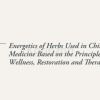
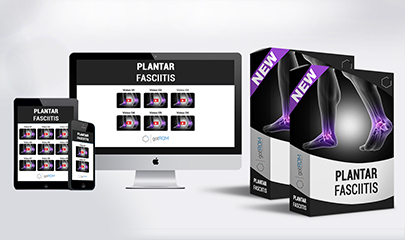

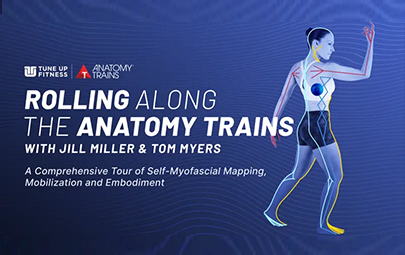
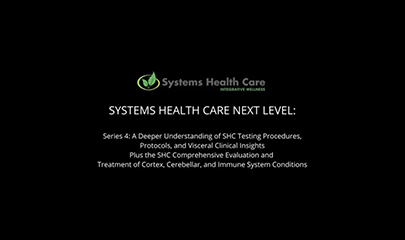

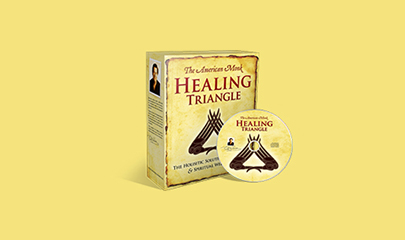
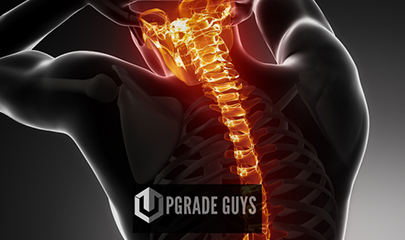
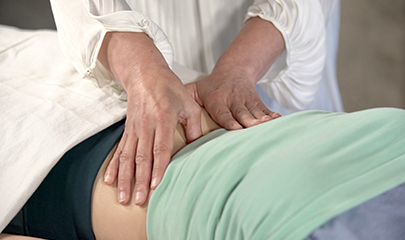
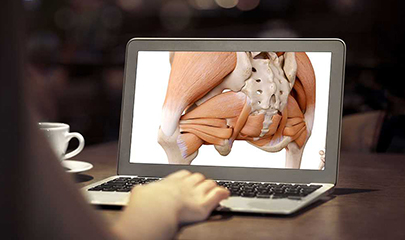


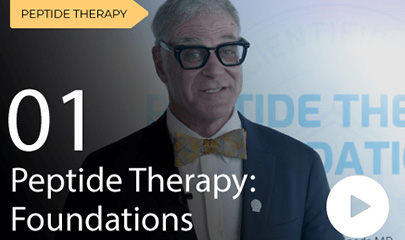

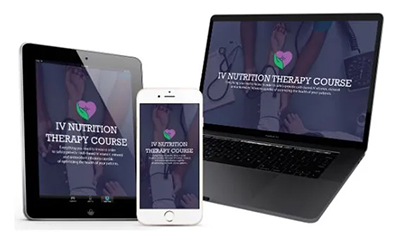

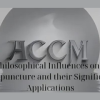
Reviews
There are no reviews yet.